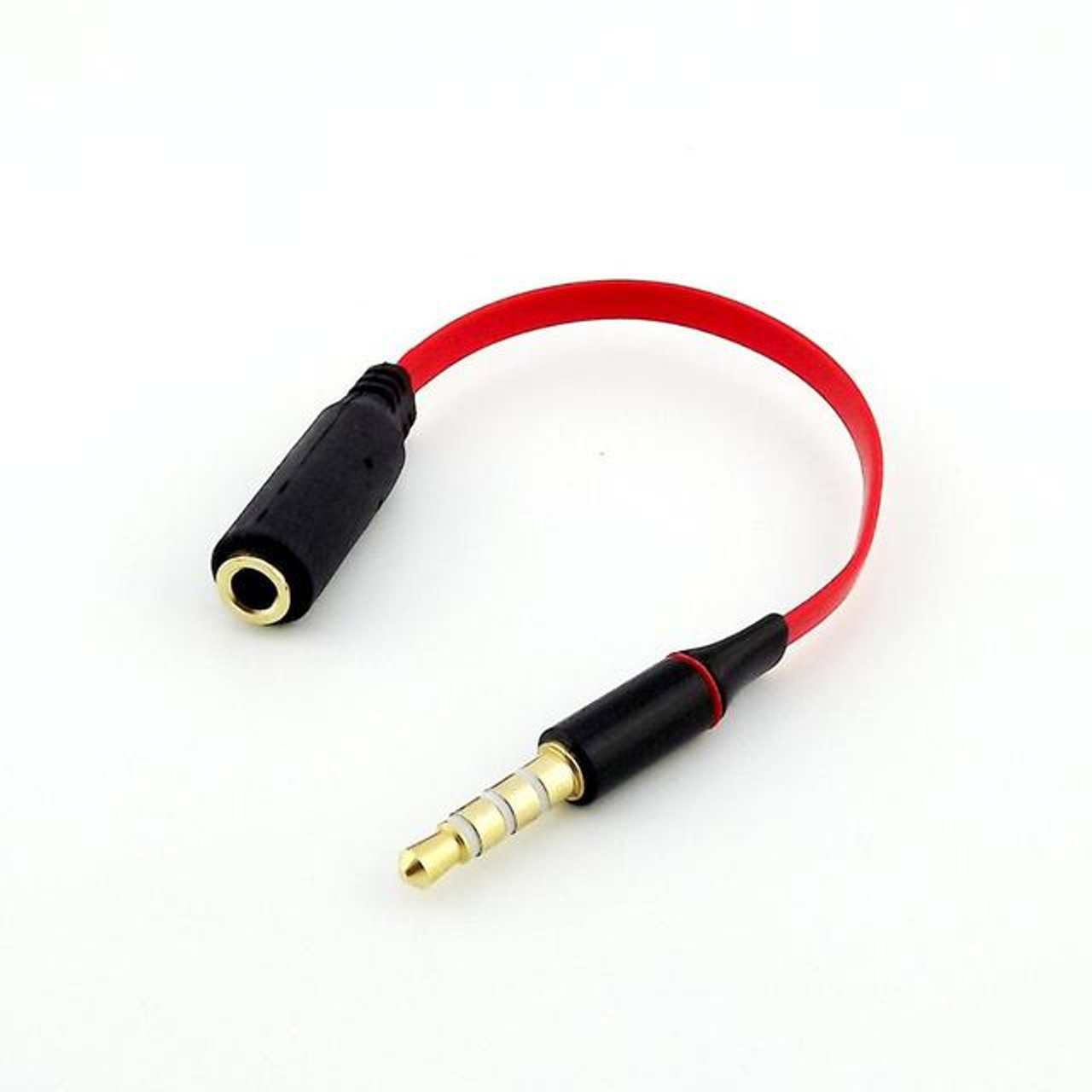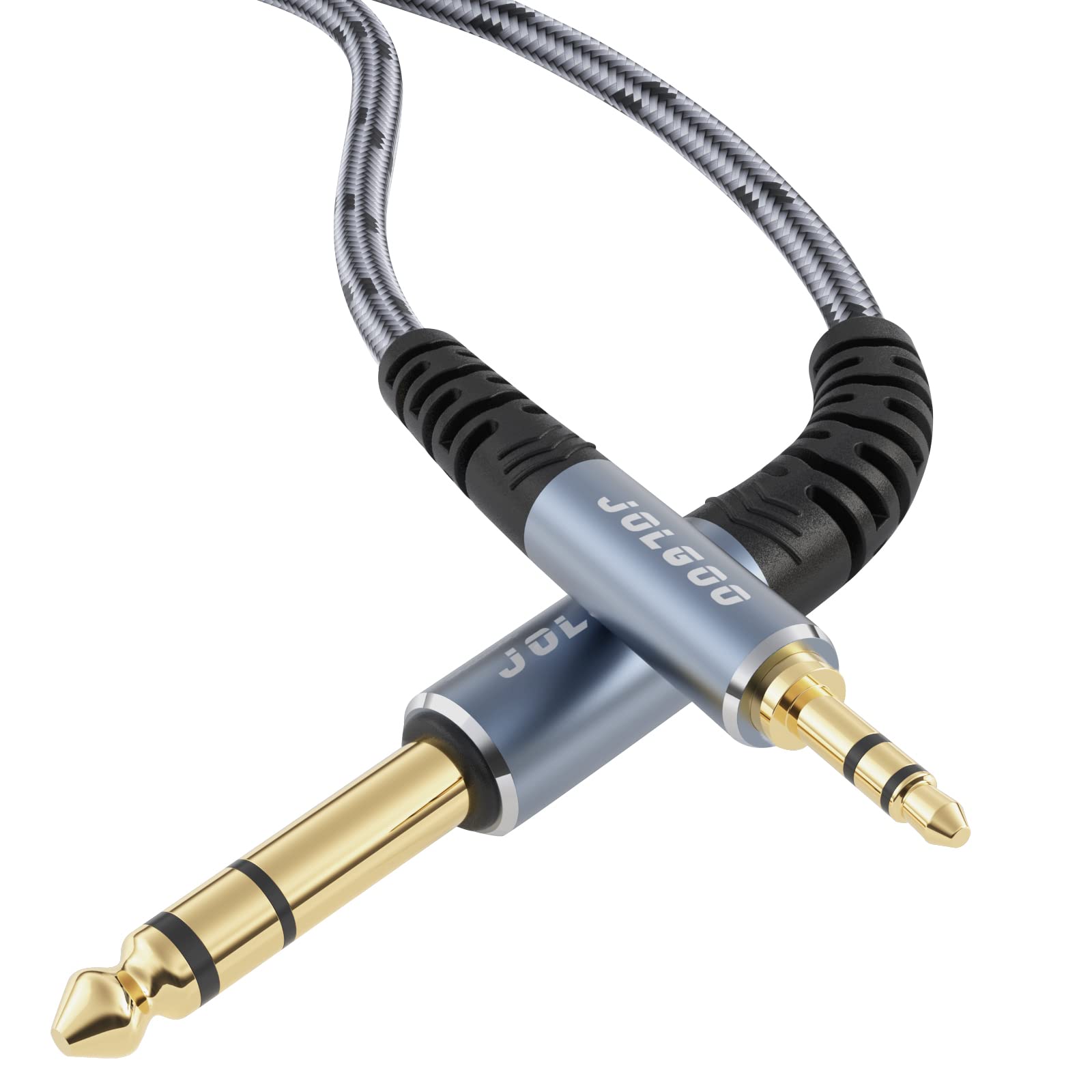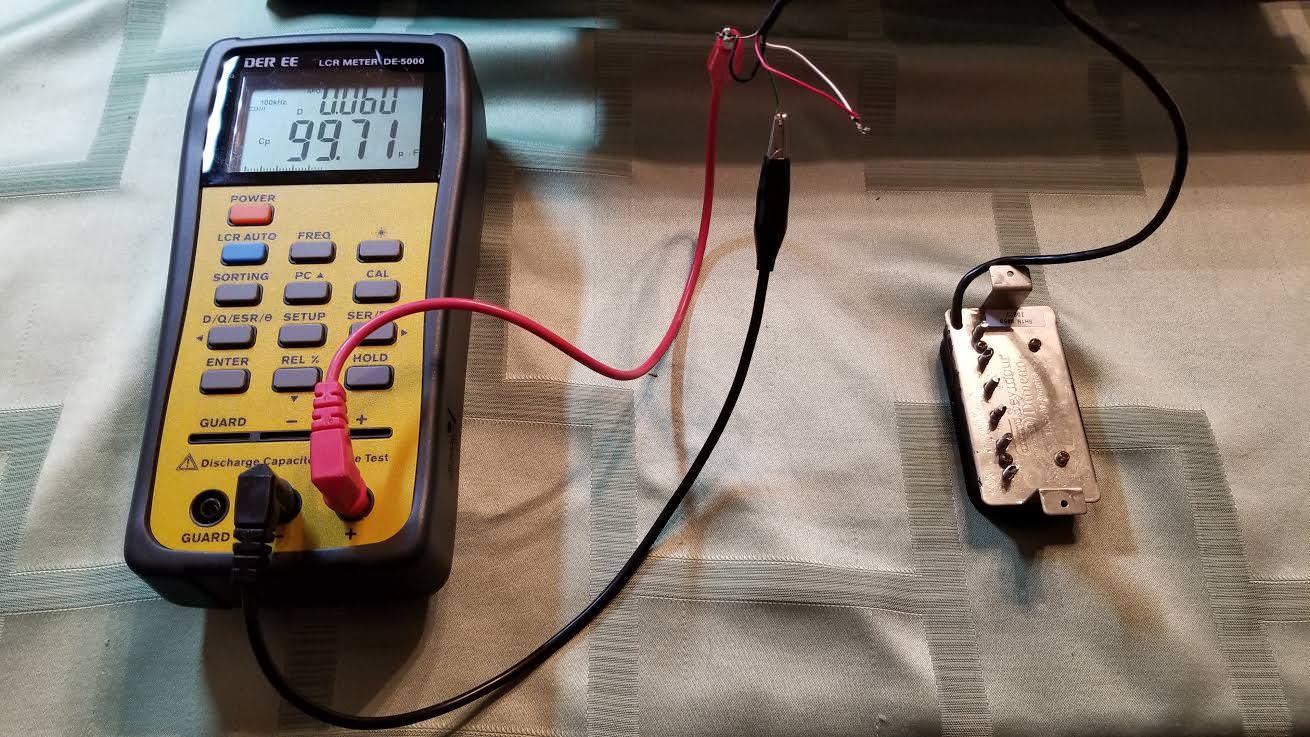Home>Production & Technology>Audio Cable>How To Tell If Audio Cable Is Ctia


Audio Cable
How To Tell If Audio Cable Is Ctia
Modified: January 22, 2024
Learn how to determine if an audio cable is CTIA compatible and ensure optimal audio performance. Find out if your audio cable meets the industry standard.
(Many of the links in this article redirect to a specific reviewed product. Your purchase of these products through affiliate links helps to generate commission for AudioLover.com, at no extra cost. Learn more)
Table of Contents
Introduction
Audio cables are an essential component in any audio setup, whether it’s for professional use or personal enjoyment. They are responsible for transmitting audio signals from one device to another, ensuring clear and high-quality sound reproduction. With the advancement of technology, different types of audio cables have emerged to cater to various audio devices and their respective requirements.
One important factor to consider when choosing an audio cable is the type of connector it uses. One of the most common connector standards for audio cables is CTIA, which stands for Cellular Telecommunications Industry Association. CTIA is widely used in many audio devices, including headphones, earphones, and mobile devices.
In this article, we will delve into the details of CTIA audio cables. We will discuss what CTIA is, compare it with other standards like OMTP, and provide you with the necessary knowledge to identify whether an audio cable is CTIA compatible or not.
Understanding the difference between CTIA and other standards is crucial, as it ensures that your audio cable is compatible with your devices and will provide optimal audio performance.
What is CTIA?
CTIA, which stands for Cellular Telecommunications Industry Association, is a standard that defines the configuration of audio connectors used in mobile devices and accessories. It was developed by the CTIA trade association to establish consistency among manufacturers and ensure seamless compatibility between different devices.
CTIA connectors typically consist of a 3.5mm audio jack with four metal segments known as rings. Each segment serves a specific purpose in audio transmission and device control. The first ring is for the left audio channel, the second ring is for the right audio channel, the third ring is for the ground connection, and the fourth ring is for the microphone input or remote control functionality.
One of the main advantages of CTIA is its widespread adoption. Many mobile device manufacturers, such as Apple and Samsung, follow the CTIA standard in their products. This means that most headphones, earphones, and audio accessories designed for these devices are also CTIA compatible.
CTIA has become the de facto standard for audio connectors in the mobile industry, but it’s important to note that not all devices and accessories adhere to this standard. Some older devices, especially those manufactured before the widespread adoption of CTIA, might use different connector configurations.
Understanding the CTIA standard is essential when purchasing audio cables or accessories for your mobile devices. Ensuring compatibility will not only guarantee proper audio transmission but also enable features like microphone support and remote control functionality.
Different Types of Audio Cables
Audio cables come in various types, each suited for specific applications and devices. Understanding the different types of audio cables will help you choose the right one for your audio setup. Here are some of the most common audio cable types:
- 3.5mm Stereo Cable: Also known as an auxiliary cable or mini-jack cable, the 3.5mm stereo cable is a popular choice for connecting audio devices such as smartphones, tablets, and computers to speakers, headphones, or car stereo systems. It typically has a male 3.5mm connector on both ends.
- RCA Cable: RCA cables are commonly used for connecting audio and video components. They feature two or more color-coded connectors, usually red and white, for stereo audio signals. RCA cables are often used to connect DVD players, gaming consoles, and audio receivers.
- XLR Cable: XLR cables are primarily used in professional audio setups, such as recording studios and live sound systems. They are known for their balanced audio transmission, which minimizes noise and interference. XLR cables have three pins and are commonly used for microphones and stage equipment.
- Optical Cable: Optical cables, also referred to as TOSLINK or SPDIF cables, transmit digital audio signals using optical fibers. They are commonly used for connecting devices like TVs, soundbars, and game consoles to audio receivers or surround sound systems.
- HDMI Cable: HDMI cables are primarily used for audio and video transmission in high-definition devices. They carry both digital audio and video signals, making them ideal for connecting devices like TVs, Blu-ray players, and home theater systems.
These are just a few examples of the various audio cable types available. It’s essential to choose the appropriate cable based on your specific audio setup and device requirements. Additionally, ensuring compatibility between the audio cable and your devices is crucial for optimal audio performance. This is where understanding the CTIA standard becomes important, especially when it comes to mobile devices and accessories.
CTIA vs. OMTP Standards
When it comes to audio connectors used in mobile devices, there are two prominent standards: CTIA and OMTP (Open Mobile Terminal Platform). While CTIA is widely adopted by manufacturers like Apple and Samsung, OMTP was more prevalent in older devices and some international markets.
The main difference between CTIA and OMTP lies in the arrangement of the connector’s rings. In a CTIA connector, the order of the rings from tip to base is left audio, right audio, ground, and microphone or remote control. On the other hand, in an OMTP connector, the order is left audio, ground, right audio, and microphone or remote control.
This difference in ring arrangement means that a CTIA-compatible audio cable might not work properly with an OMTP device or vice versa. Plugging a CTIA audio cable into an OMTP device can result in mixed or reversed audio channels, while plugging an OMTP audio cable into a CTIA device may not provide the expected functionality for microphone or remote control features.
To complicate matters further, some devices, particularly older models, do not adhere to either standard and have their own unique ring arrangements. This can make it challenging to find a suitable audio cable that is compatible with these devices.
It’s important to note that as CTIA gained widespread acceptance, most manufacturers transitioned to this standard, especially in newer models. However, it’s always a good practice to double-check the compatibility of your audio cable and device to ensure proper functionality.
If you have an OMTP device, there are adapters available that can convert an OMTP audio cable into a CTIA or vice versa. These adapters rearrange the rings to match the standard used by your device, allowing you to use a wider range of audio accessories without any compatibility issues.
Understanding the differences between CTIA and OMTP standards will help you choose the right audio cable for your specific device and avoid any audio compatibility issues.
Identifying a CTIA Audio Cable
Identifying whether an audio cable is CTIA compatible can be done through visual inspection and considering its compatibility with mobile devices. Here are some methods to help you identify a CTIA audio cable:
Visual Inspection: One way to identify a CTIA audio cable is to examine the connector itself. A CTIA connector typically has three black or gold rings that separate the metal sections of the jack. The first ring, closest to the tip of the connector, is for the left audio channel. The second ring is for the right audio channel, and the third ring is for the ground connection. If your audio cable has these distinctive rings, it is likely to be CTIA compatible.
Compatibility with Mobile Devices: Another method to identify a CTIA audio cable is to test its compatibility with mobile devices. CTIA is the standard used by many mobile device manufacturers, so most headphones and earphones designed for these devices will be CTIA compatible. Simply plug the audio cable into your mobile device’s audio jack and check if the audio is correctly transmitted to both earpieces. Additionally, test the functionality of any built-in microphone or remote control buttons to ensure they work as intended.
It’s important to note that some manufacturers may not explicitly label their audio cables as CTIA compatible. However, if the cable is designed for use with mobile devices like smartphones and tablets, it is likely to follow the CTIA standard.
If you are unsure about the compatibility of your audio cable, you can consult the manufacturer’s documentation or customer support for clarification. They will be able to provide you with the necessary information regarding the cable’s compatibility and ensure that it is suitable for your specific audio setup.
Remember, using a CTIA audio cable with CTIA-compatible devices ensures proper audio transmission and functionality, allowing you to fully enjoy your audio experience.
Visual Inspection
One of the most effective ways to identify a CTIA audio cable is through visual inspection. By examining the connector and its distinguishing features, you can determine whether it is CTIA compatible. Here are some key aspects to look for during a visual inspection:
Connector Rings: CTIA audio cables typically have a 3.5mm audio jack with multiple rings that separate the different segments of the connector. The number and arrangement of these rings are essential indicators of a CTIA cable. A standard CTIA connector has three rings or segments. The first ring, located closest to the tip of the connector, is typically used for the left audio channel. The second ring denotes the right audio channel, and the third ring represents the ground connection. This consistent arrangement of rings is a characteristic feature of CTIA cables.
Color and Material: While not a definitive indicator, the color and material of the connector can offer insight into its compatibility. CTIA connectors are commonly found in black or gold tones. Additionally, they are often made of metal for durability and optimal signal transmission. However, it’s important to note that the color and material alone should not be solely relied upon for identifying a CTIA cable, as these factors can vary between different manufacturers and models.
Labeling or Branding: Some audio cables may come with labeling or branding that indicates their compatibility with CTIA devices. Look for any logos or symbols that specifically mention CTIA. However, it’s important to exercise caution, as labeling can sometimes be ambiguous or misleading. Verify the other visual characteristics mentioned above in conjunction with the labeling to ensure compatibility.
By visually inspecting the connector for the presence of rings, considering the color and material, and checking for any labeling or branding specifically related to CTIA compatibility, you can confidently determine whether an audio cable is CTIA compatible or not.
If you are still unsure about the compatibility of an audio cable, it’s always a good idea to consult the manufacturer’s documentation or contact their customer support for clarification. They will be able to provide accurate information regarding the cable’s compatibility and guide you in selecting the appropriate audio cable for your devices.
Compatibility with Mobile Devices
When it comes to audio cables, compatibility with mobile devices is a crucial aspect to consider. Most mobile devices, such as smartphones and tablets, follow the CTIA standard for their audio connectors. Therefore, it’s essential to ensure that your audio cable is compatible with these devices to achieve optimal performance. Here are some factors to consider regarding compatibility with mobile devices:
Audio Transmission: The primary purpose of an audio cable is to transmit audio signals from your mobile device to your headphones, earphones, or speakers. A CTIA-compatible audio cable ensures the correct transmission of audio channels, providing you with clear and accurate sound reproduction. When connecting your audio cable to your mobile device, ensure that the sound is evenly distributed between the left and right audio channels. If the sound is imbalanced or you hear audio only in one ear, it could indicate a compatibility issue.
Microphone Support: Many audio cables designed for mobile devices also come with a built-in microphone. This enables you to make hands-free calls or use voice commands. CTIA-compatible audio cables allow for seamless integration between the microphone on the cable and your mobile device, ensuring clear voice transmission during phone calls or voice recordings. Test the microphone functionality by performing a voice recording or making a test call to ensure proper compatibility.
Remote Control Functionality: Some audio cables feature remote control buttons that allow you to adjust the volume, skip tracks, or answer calls without touching your mobile device. CTIA-compatible audio cables enable these remote control functions to work seamlessly with your mobile device. Test the functionality of the remote control buttons by adjusting the volume or skipping tracks to ensure that they respond properly.
By using a CTIA-compatible audio cable with your mobile device, you can ensure that the audio is transmitted correctly to your headphones or speakers, and that the microphone and remote control features work as intended.
If you encounter any compatibility issues, such as imbalanced audio or non-functional microphone or remote control buttons, it’s advisable to verify the compatibility of both the mobile device and the audio cable. Consult the manufacturer’s documentation or contact their customer support for assistance in troubleshooting or selecting a compatible audio cable.
Remember, ensuring compatibility between your audio cable and mobile device is crucial for an enjoyable and hassle-free audio experience.
Testing the Audio Cable
Once you have identified an audio cable as potentially CTIA compatible, it’s important to test it to ensure its functionality and performance. Testing the audio cable will help verify its compatibility and ensure that it meets your audio needs. Here are some steps to follow when testing an audio cable:
1. Connect the Cable: Plug one end of the audio cable into the audio output source, such as your mobile device or audio interface. Ensure that it is firmly inserted into the audio jack to establish a secure connection.
2. Connect the Headphones/Speakers: Connect the other end of the audio cable to your headphones, earphones, or speakers. Make sure it is securely connected to ensure proper audio transmission.
3. Check Audio Transmission: Play a test audio file or music track on your mobile device or audio source. Listen carefully to see if the audio is properly transmitted to your headphones or speakers. Check for any issues, such as distortion, imbalanced audio, or poor sound quality.
4. Test Microphone (If Applicable): If your audio cable has a built-in microphone, test its functionality. Record a voice memo or make a test call to ensure that the microphone is working correctly. Check for clear and audible voice transmission without any disruptions or distortion.
5. Test Remote Control Functions (If Applicable): If your audio cable features remote control buttons, test their functionality. Adjust the volume, skip tracks, or answer calls using the remote control buttons. Ensure that they respond correctly and perform the desired actions on your mobile device.
6. Repeat Tests: Repeat the above steps with different audio files and in various environments to ensure consistent performance of the audio cable. This will help identify any potential issues that may arise under specific conditions.
If the audio cable performs well during testing, transmitting audio accurately, allowing microphone usage if applicable, and responding properly to remote control commands, then it is likely to be CTIA compatible and suitable for your needs.
However, if you encounter any issues with audio quality, microphone functionality, or remote control features, it’s possible that the cable may not be properly compatible with your device. In such cases, consider trying a different audio cable that is explicitly labeled or known to be CTIA compatible, or reach out to the manufacturer for further assistance.
Testing the audio cable ensures that you are using a reliable and compatible cable that will meet your audio requirements and provide an enjoyable listening experience.
Conclusion
Identifying whether an audio cable is CTIA compatible is crucial for ensuring optimal audio performance and functionality, especially when using it with mobile devices. By understanding the CTIA standard, differentiating it from other standards like OMTP, and performing visual inspections and compatibility tests, you can confidently determine if an audio cable is CTIA compatible or not.
Visual inspection involves examining the connector and looking for distinct features such as rings, color, and labeling. A connector with three rings, typically in black or gold, is a strong indication of CTIA compatibility.
Compatibility with mobile devices is another essential factor to consider. CTIA is widely adopted by many mobile device manufacturers, so most headphones and earphones designed for these devices are likely to be CTIA compatible. Testing the audio cable’s audio transmission, microphone functionality, and remote control features can help ensure a seamless experience.
If you encounter any compatibility issues or are unsure about the compatibility of your audio cable, it’s recommended to consult the manufacturer’s documentation or reach out to their customer support for assistance.
Remember, selecting a CTIA compatible audio cable will not only provide optimal audio performance but also enable features such as microphone support and remote control functionality on your mobile devices.
By following these guidelines and performing the necessary checks, you can confidently choose and use a CTIA compatible audio cable that meets your audio needs and enhances your listening experience.











